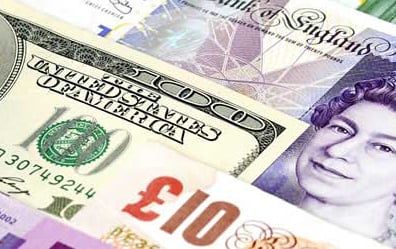Despite the US inflation data coming in slightly better than expected, the USD remains fragile and continues to alternate between bullish and bearish momentum. Personally, I think that there is too much focus on inflation expectations and that traders should be looking at Friday’s GDP figures as a key factor behind whether US interest rate expectations will be pushed back. We have known for a long time that the Federal Reserve holds inflation expectations as a decisive factor behind any potential rate hikes, although inflation is not too low to not warrant a small rate increase. The main contributor behind the recent USD correction has been a realization from traders that the FOMC were never going to be hurried into raising interest rates. This was always going to be the case and if the GDP is revised lower, the FOMC will find another reason to be hesitant.
It has been an unlikely comeback and mostly inspired by USD profit-taking, but the EURUSD has managed to punch its way back up to 1.10 once again. I remain bearish below 1.10 and an upside break above 1.1040 would be required to change my attitude towards the Eurodollar. As far as I am concerned, the USD softness is a temporary correction after a period of substantial gains, and it will only become a trend if concerns arise that the FOMC will refrain from raising interest rates altogether this year. With that being said, the economic sentiment across Europe has received a boost by data suggesting that business output is growing at its fastest rate in over three years. The German economy has caught my eye following its manufacturing and services PMI advancing further than expected last month, which has provided another indication that the economic powerhouse has fully recovered from the unexpected period of turbulence suffered during the second half of last year.
The GBPUSD dipped to a daily low at 1.4895 following annualised UK inflation falling dangerously close to deflation during February. At first thought, the UK inflation performance will no doubt strengthen the Bank of England’s (BoE) renowned stubborn views on weak price pressures and it will therefore continue to push back interest rate expectations. It has to be said that these interest rate expectations have been continually pushed back anyway and what might have further alerted the BoE and possibly prompt discussions within the Monetary Policy Committee (MPC) is core CPI also coming in weaker than expected. An unexpected decline in core CPI could provide a crucial indication that UK inflation risks are extending further than the dramatic decline in the price of oil, while also providing some light to those unexpected comments from the BoE Chief Economist last week.
The extended run of USD softness has provided the WTI bulls with enough momentum to continue its charge up the charts and resulted in Crude Oil recording a two-week high at $48.53. This is a significant rebound from the six-year low that was visited at $42.04 last week, although it has also been strongly inspired by a round of USD profit-taking. Bearing this in mind, further upside gains do appear underpinned to the USD profit-taking continuing. This isn’t a sure thing and in my opinion it will only become a trend if data suggests that the FOMC will have to refrain from raising interest rates this year altogether. This is unlikely, and USD appetite is likely to return if data indicates the FOMC will still be raising interest rates, meaning that the possibility of a pullback in WTI Crude Oil should not be ruled out.
Advertisement
Follow Jameel on Twitter @Jameel_FXTM
For more information please visit: Forex Circles
Advertisement
Add a comment







